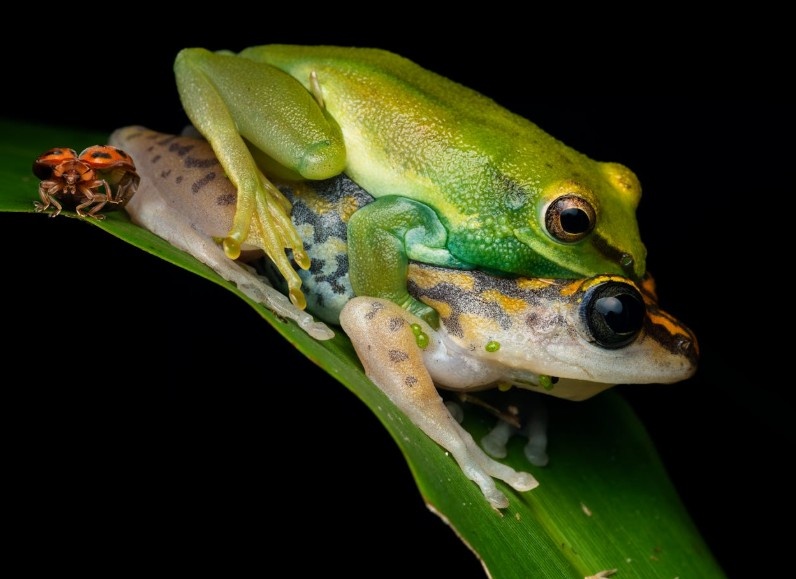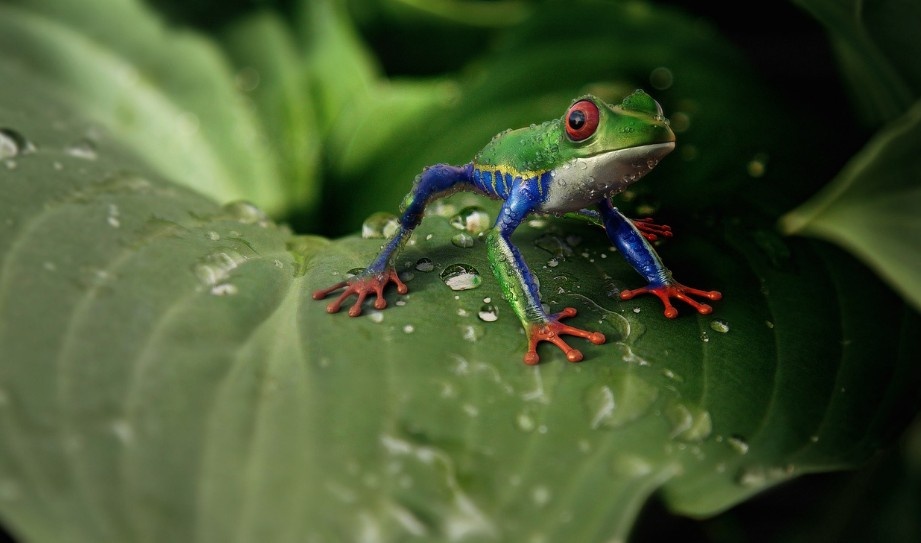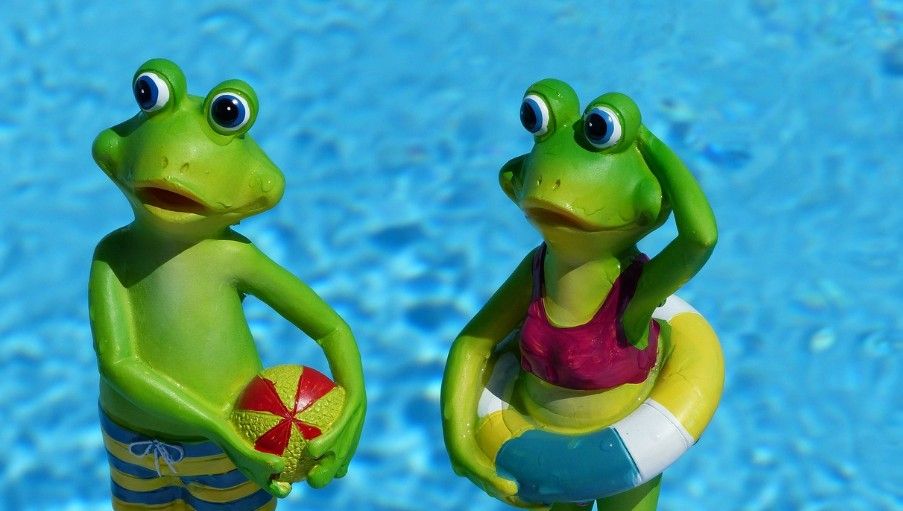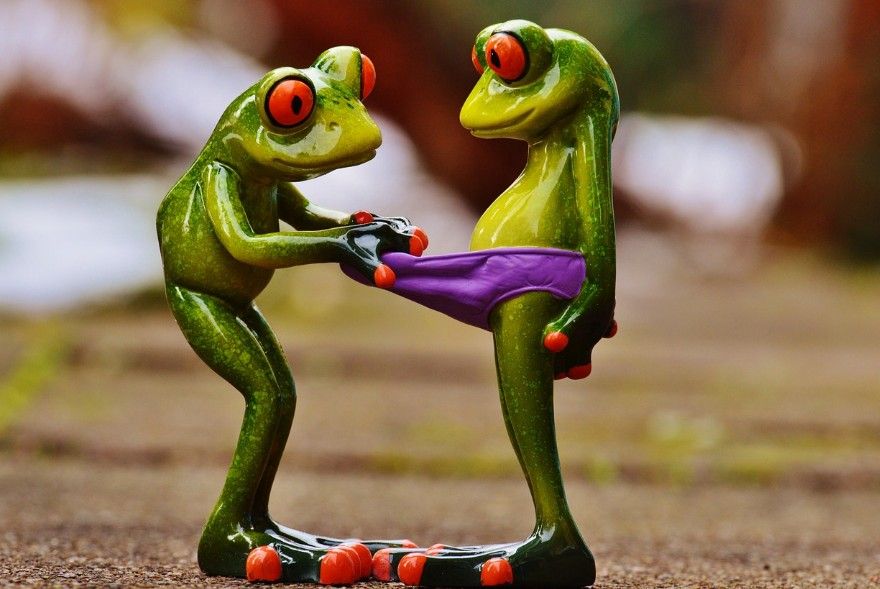Are you looking for a great aquatic pet that you will want to put in your house? Then these African dwarf frogs could prove to be the great tankmates for your aquarium. These totally aquatic, minute frogs are known for their peaceful nature with unusual habits and colors. This post will give you all the info you need on African dwarf frogs. It will cover their diet, behavior, habitat, and more. Here is more easy pets to care for link
Summary
- Low-maintenance pets: African Dwarf Frogs are quite easy to care for and are suitable for all pet owners.
- Ideal Tank Environment: They thrive in clean warm water with a tidy set-up tank.
- Simple Diet: Feed them high-quality pellets, frozen or live food, and occasional treats like bloodworms to keep them healthy.
- Amazing fact: These frogs can surface and dive back into water, are also known to jump extraordinarily.
- Social Animals: They love to live in groups and flourish by associating with other inhabitants of their aquarium but need to be kept apart from big fish that can stress them out.
- Longevity: With proper care, these frogs can live happily for several years, bringing endless joy and entertainment.
The Unique Beauty of African Dwarf Frog Colors
The colors of African dwarf frogs are subtle yet mesmerizing. Normally, these frogs appear in earthy shades like brown, olive green, or gray. Their bodies often have speckled patterns. This adds to their charm and helps them blend into nature.
Though their colours may change ever so slightly due to a change of scene or mood, which, again, is just natural’s way of helping them fit in. These colours will add an aesthetic value that is natural-looking on your aquarium. It will give balance to those bright vibrant colours of your fish or luscious aquatic plants.
Where Are African Dwarf Frogs Originally From?
African dwarf frogs belong to the genus Hymenochirus. They are natively warm, slow-moving rivers, and ponds of Central Africa. They are one of those fully aquatic frogs. Contrary to other relatives of African clawed frogs, dwarf frogs are smaller in size, gentle, and more suitable for community tanks.
African clawed frogs, for example, are bigger and sturdier but have different care conditions. Two species are often confused, but their differences are what really matter in proper care.

Fully Aquatic: Know the Lifestyle of African Dwarf Frogs
Unlike most frogs, which spend half their time in water and the other half on land, African dwarf frogs are purely aquatic animals. However, they must surface to breathe air. They have lungs, not gills. So, an escape-proof tank is essential for their safety.
Escape Proofing These little explorers can jump pretty well. It is always best to seal the tank lid very well, as they will tend to jump out of the water when exploring.
Tank Design: The Perfect Home for Your African Dwarf Frogs
A good tank design will help your African dwarf frogs live well. To design their perfect home:
Tank Size Start with a minimum of 10 gallons for 2-4 frogs. This size allows enough swimming space while maintaining water quality.
Water Conditions
- Temperature: Maintain a stable range between 72°F and 78°F.
- pH Levels: Keep the water pH between 6.5 and 7.5.
- Filtration: Use a gentle filter to avoid strong currents that might stress the frogs.
Substrate and Decorations Use smooth gravel or sand to avoid injuring your frogs’ delicate skin. Add aquatic plants, caves, and driftwood to mimic their natural habitat and provide hiding spots.
Diet and Food: What Do African Dwarf Frogs Eat?
To keep your African dwarf frogs healthy, providing them with a balanced diet is crucial. These small, carnivorous frogs primarily eat protein-based foods.
What to Feed Your Frogs
- Live or Frozen Foods: They love bloodworms, brine shrimp, and daphnia.
- Sinking Pellets: Frog or bottom-feeder pellets are great staples.
- Occasional Treats: Give your frogs small pieces of earthworms or freeze-dried tubifex worms.
Diet Tips
- Feed them once a day, only giving them what they can eat in a few minutes.
- Feed shy frogs with feeding tweezers.
- Color Variations and Differences Between African Dwarf Frogs and African Clawed Frogs
- Many people get confused between African dwarf frogs with African clawed frogs. Though similar to each other, they also have several differences:
African Dwarf Frogs
- They are smaller in size about 2-3 inches.
- Completely aquatic and very docile by nature.
- Very soft colours with dotted patterns.
African Clawed Frogs
- Size: Larger (up to 5 inches).
- They are more aggressive and predatory.
- Solid, uniform colors in gray or olive green
African clawed frogs prefer species-only tanks. Dwarf frogs thrive in peaceful community setups.
The Social Side: Best Tank Mates for African Dwarf Frogs
African dwarf frogs are social animals and enjoy living in a group of their kind. They also get along well with other non-violent aquatic species.
- Tankmates Suggestions
- Fish: Neon tetras, guppies, or danios.
- Snails: Nerite or mystery snails.
- Shrimp: Ghost or cherry shrimp.
Avoid putting them in the same tank with big or aggressive species like cichlids that can be a danger to your frogs.
Life Span and African Dwarf Frogs Life Span in the Tank

An African dwarf frog, if well taken care of, can live for 5 to 8 years in captivity. This would depend on the diet they receive, the quality of water, and their general care.
These frogs spend their days ambling, digging or floating on the surface of water. Their very odd behavior such as “zen float” in which they stretch out their legs and hover motionless is endlessly entertaining to view them.
Breeding African Dwarf Frogs
Breeding African dwarf frogs can be quite a very rewarding experience. This is how one can provoke them to produce offspring:
- Water Temperature: Gradually increase it up to about 78°F.
- Diet: High-protein diet will induce breeding activities.
- Environment: Add floating plants in such a way that females will deposit their eggs on it. The small tadpoles produced after hatching will need special food items such as infusoria or baby brine shrimp.
Common Health Issues and Prevention
Healthy African dwarf frogs are active, alert, and smooth-skinned. However, they can fall victim to health issues if their environment is not maintained.
Common Issues
- Fungal Infections: Look for white patches on the skin.
- Red Leg Syndrome: A bacterial infection causing redness on their legs.
- Bloating: Typically a result of contaminated water or overfeeding.
Prevention Tips
- Do regular water changes.
- Monitor water parameters every week.
- Quarantine new tankmates to avoid the introduction of diseases.
Fun Facts About African Dwarf Frogs
Let’s wrap things up with some fun trivia about these amazing creatures:
They Sing! Male African dwarf frogs produce a buzzing or humming sound to attract females.
Unique Feeding Style: They do not have tongues or teeth and shove food into their mouths using their front legs.
Great Jumpers: They can jump surprisingly high despite their small size.
Role of African Dwarf Frogs in Ecosystems
In their habitats, African dwarf frogs help balance aquatic ecosystems. They help control small invertebrate populations. This keeps their environments healthy. This highlights their importance beyond being captivating pets.
Reproduction and Lifespan: A Deeper Dive
We briefly discussed breeding, but there is something nice to know about the African dwarf frog: it lays dozens of eggs in one time. It quickly turns into miniatures of the parents within weeks; therefore, the growth of these tadpoles is remarkable.
Differences between African Dwarf and African Clawed Frogs
African clawed frogs are famous for thriving in harsh conditions. They also differ in appearance and behavior. This makes them popular in research. This resilience lets them outcompete native species if released into the wild. So, responsible pet ownership is very important.
Prevention of Health Issues
It is rare to take aquatic pets to the vet for regular check-ups but may be crucial in determining underlying health issues. If you have unusual behaviors or symptoms, it would be best to see an exotic pet veterinarian.

Why Choose African Dwarf Frogs for Your Aquarium?
If you want low maintenance, peaceful, and quite interactive pets, then look no further than the African dwarf frog. With their colors, behaviors, and community tank compatibility, they are among the easiest pets to care for and a top choice for aquarists
Final Thoughts
African dwarf frogs are not just pet amphibians; they bring excitement and life to the aquarium. With the right care, they can thrive in an aquarium. A proper environment and a balanced diet are key.
Ready to bring these incredible aquatic frogs into your home? Learn all about the fascinating life of African dwarf frogs in an aquarium today and learn how to enjoy .
FAQ
Do African Dwarf Frogs require land?
No, African Dwarf Frogs are aquatic animals. They spend their whole life in water and do not require land. However, they need to access the surface of the water to breathe air sometimes.
Are African Dwarf Frogs poisonous?
No, African Dwarf Frogs are not poisonous. They are harmless and are great pets for aquariums.
What are good tank mates for African Dwarf Frogs?
African Dwarf Frogs will thrive with peaceful tank mates such as guppies, tetras, or other small, non-aggressive fish. Avoid larger or aggressive species that may hurt them.
How do I set up a tank for African Dwarf Frogs?
Set up a tank with at least 5 gallons of water per frog. Include soft substrate, live or artificial plants, and hiding spots like caves or driftwood. Maintain clean, dechlorinated water with a temperature between 72–78°F.
How big do African Dwarf Frogs get?
Adult African Dwarf Frogs typically grow to about 2–3 inches in length.
Are African Dwarf Frogs good pets?
Yes, African Dwarf Frogs are wonderful pets! They are low maintenance, interesting to observe, and ideal for beginners.
How long can African Dwarf Frogs hold their breath?
African Dwarf Frogs can hold their breath for 10–15 minutes but need to surface regularly for air.
How many African Dwarf Frogs should be kept together?
They are social animals and require at least two frogs together. A small group of 2–4 frogs thrives in a shared tank.
What is the lifespan of an African Dwarf Frog?
African Dwarf Frogs can live from 5–8 years with proper care.
Are African Dwarf Frogs easy to keep?
Yes, they are relatively easy to care for if you can provide them with a clean tank, proper diet, and a stress-free environment.
Are African Dwarf Frogs noisy?
No, African Dwarf Frogs are generally quiet. The male may occasionally make some soft humming or singing sounds when mating
What do African Dwarf Frogs eat?
They feed on various foodstuffs, such as frozen or live bloodworms, brine shrimp, and specialized frog pellets. Overfeed the frogs and allow food to settle at the bottom of the tank.
Why do African Dwarf Frogs shed?
Shedding is a natural process by which frogs ensure their skin remains healthy. Frogs shed their outer skin and sometimes eat it back to recycle nutrients.
How long can African Dwarf Frogs live?
Under proper care, African Dwarf Frogs usually live 5–8 years.
What to feed to African Dwarf Frogs?
Feed them sinking frog pellets and frozen or live bloodworms, as well as brine shrimp. Feeding is recommended 2–3 times a week in small portions.

